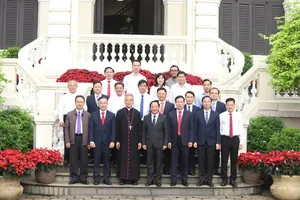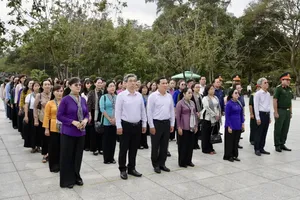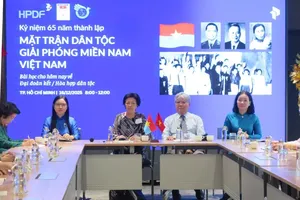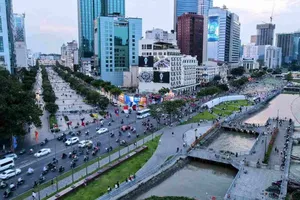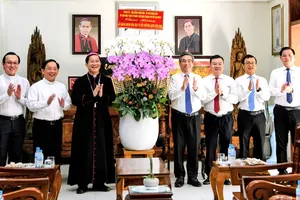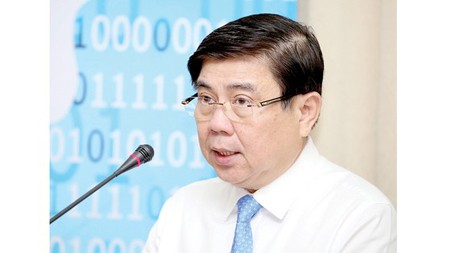
Commenting on the two times hosting conferences of the same theme, Chairman of the HCMC People’s Committee Nguyen Thanh Phong shared that the first one was to identify the current state, economic and human resources conditions as well as creating the basis for AI growth in HCMC. That conference revealed several AI programs by educational institutes, innovative startup centers, and businesses, all of which can be immediately applied in such fields as healthcare, education, traffic. As a result, related state units actively prepared proper databases for future use while a committee for forming and operating cooperative programs on AI was established.
Chairman Phong stated that this second conference focused more on models to research and implement AI in the world to adjust for domestic use in HCMC in the fields of healthcare, education, transport, security. In this event, global experts offered recommendations for the city to launch an AI development program successfully, along with practical solutions to perfect current AI projects in the city.
He clearly affirmed that the municipal authorities always encourage AI research and application to improve the living standards of residents and serve the project to transform HCMC into a smart city.
Answering the question about whether HCMC would be able to keep up with the world in Industry 4.0, he truthfully said that since Vietnam pitifully missed the first three industrial revolutions and did not have a favorable beginning, we are now more determined to change the situation thanks to the help of AI programs.
The Chairman pointed out certain advantages of HCMC at the moment like a young and dynamic economy to wholeheartedly welcome state-of-the-art technologies and to be ready for potential industries. Because of the familiarity with developing software and hardware, we now have capable human resources, along with the large quantity of overseas students staying at the top-10 in the world, overseas Vietnamese living in developed nations, who are ready to help their fatherland develop.
Reporting on current aspects in HCMC that have already applied AI to tackle existing problems, Mr. Phong stated that just like other mega cities in the world, with a population of more than 10 million, HCMC is facing tough challenges such as traffic congestions, fast population growth.
The use of AI in traffic, therefore, greatly aid traffic management as it allows effective forecast models after collecting sufficient data and then analyzing traffic behaviors. These models can predict possible traffic problems and optimize traffic flows to provide the most suitable routes for vehicle controllers. The application of AI in developing autonomous vehicles, information exchange between 2 vehicles (V2V) or between vehicles and infrastructure (V2I and I2V) or between vehicles and centers (V2C and C2V) are also considered. Other uses of AI in traffic is the monitoring of traffic violation by collecting and summarizing typical traffic behaviors of traffic participants or the administration and maintenance of traffic infrastructure by automatically discovering damages.
The Chairman also explained the use of AI in healthcare. Lately, many hospitals in HCMC have already implemented AI applications to improve treatment quality. For example, Binh Dan Hospital has installed robot Da Vinci since November 2016 and has performed operation for over 687 patients suffering from complicated diseases. Recently, the People’s Hospital 115 equipped robot Modus V Synaptive (2nd generation) to perform operation for 7 patients having complex neurological diseases. It also made good use of specialized AI software to diagnose strokes to reduce the handicapped risk among its patients. Similarly, the HCMC Oncology Hospital is piloting the AI software IBM Watson for Oncology in consulting and aiding doctors to choose the most effective treatment method for cancer patients. The Children’s Hospital No.1 has already applied machine learning principles to develop a piece of software for its doctors to prescribe medicines logically.
These examples have proved that the use of AI to improve healthcare performance and quality is a must in HCMC.
As to the use of AI in carrying out the project ‘Transforming HCMC into a Smart City’, Chairman Nguyen Thanh Phong commented that this new smart city bases itself on the 4 pillars of building a common database and developing an open database ecosystem, creating an operating center for a smart city, constructing a simulation center to forecast local socio-economic strategies, and forming an information security center.
Until now, the common database and the open database ecosystem are operating in Quang Trung Software City. The city is going to run the operating center for a smart city (the first phase) in the Office of the HCMC People’s Committee based on the information integrated from current camera systems of the local authorities as well as the emergency hotlines 113-114-115, the system to receive and handle problems on urban infrastructure 1022.
The simulation center to forecast local socio-economic strategies has been in use to investigate problems, collect information for the creation of a database to serve the task of building simulation and forecast models; researching and systemizing theoretical knowledge and practical experience to build the best simulation and forecast model; step by step systemizing quantity models for the analysis of major socio-economic rates, along with international and local issues that the city is concerned.
Therefore, the Chairman confirmed that the aim of AI programs in HCMC is to better use AI to achieve all of the above goals as soon as possible.
He talked about the recent event of Viettel launching the 5G technology on its 1,000 IoT stations to fully cover the whole city. He also mentioned the formation of innovative urban areas or technological urban areas in HCMC, saying that thanks to its vitality and high scientific potential, HCMC is now actively establishing an AI ecosystem where there is a strong connection between researchers, training centers, and businesses for a sustainable development.


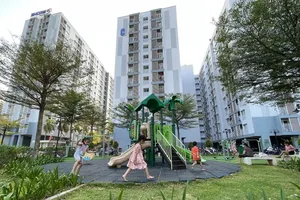
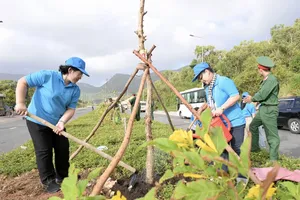
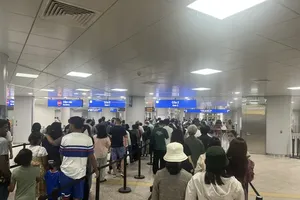
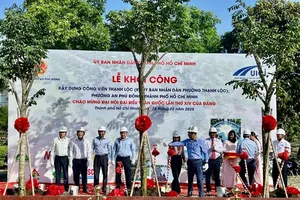
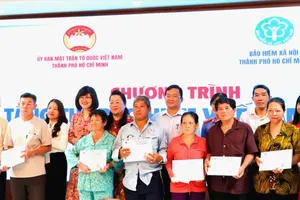
)

